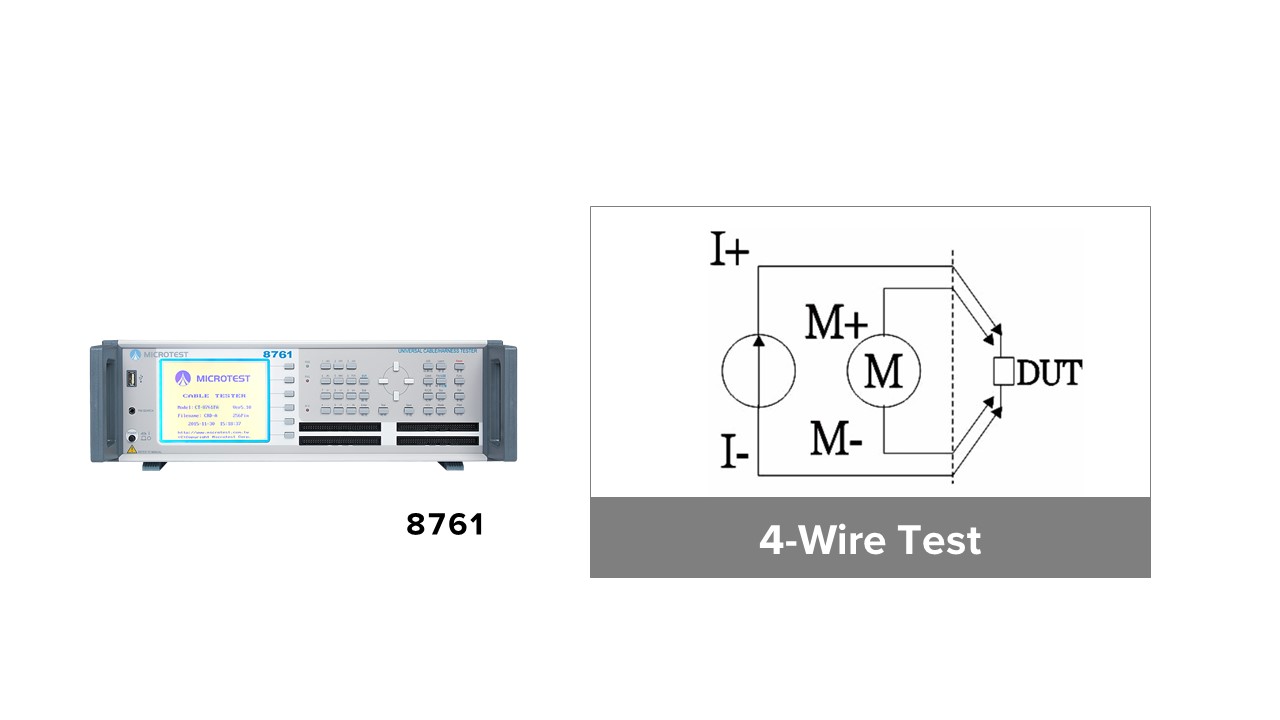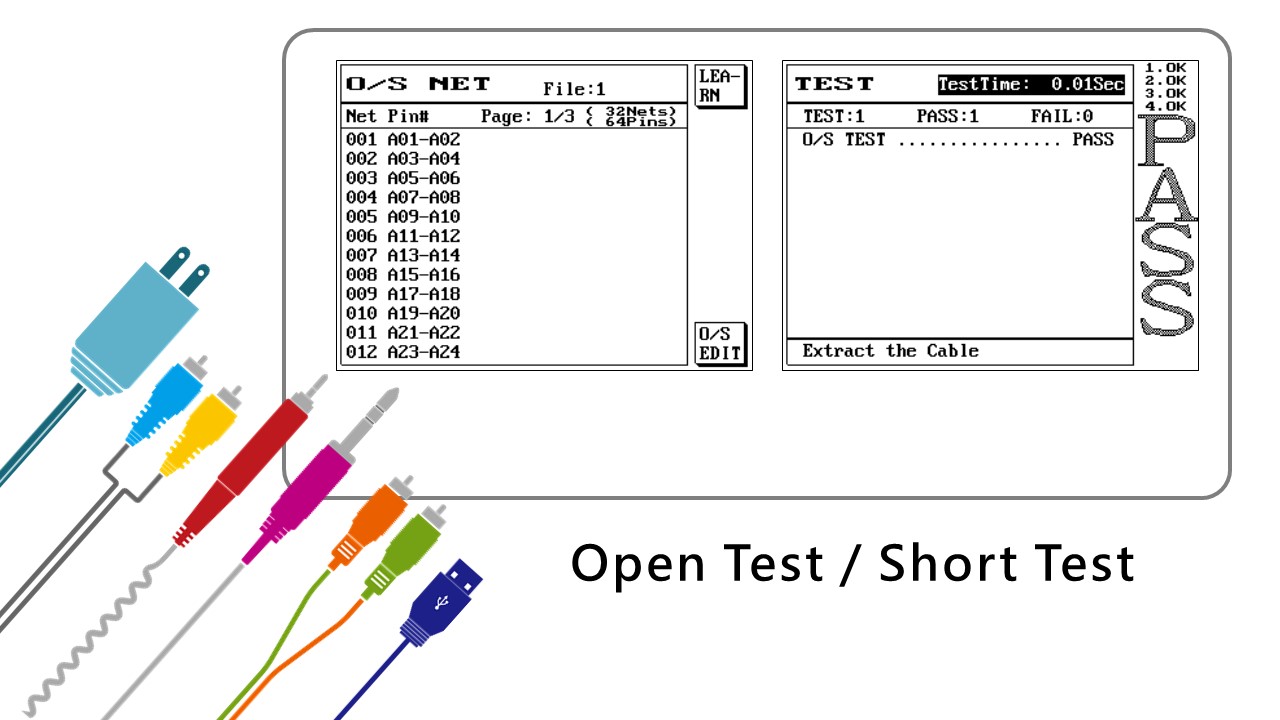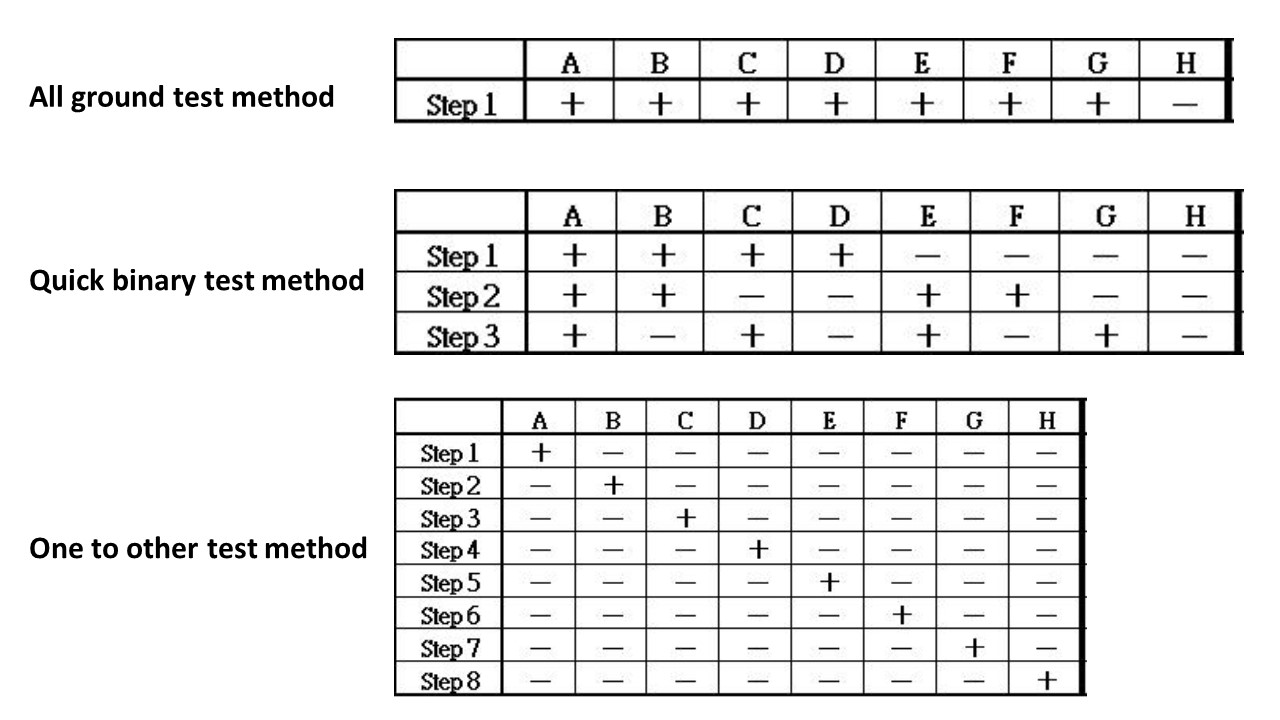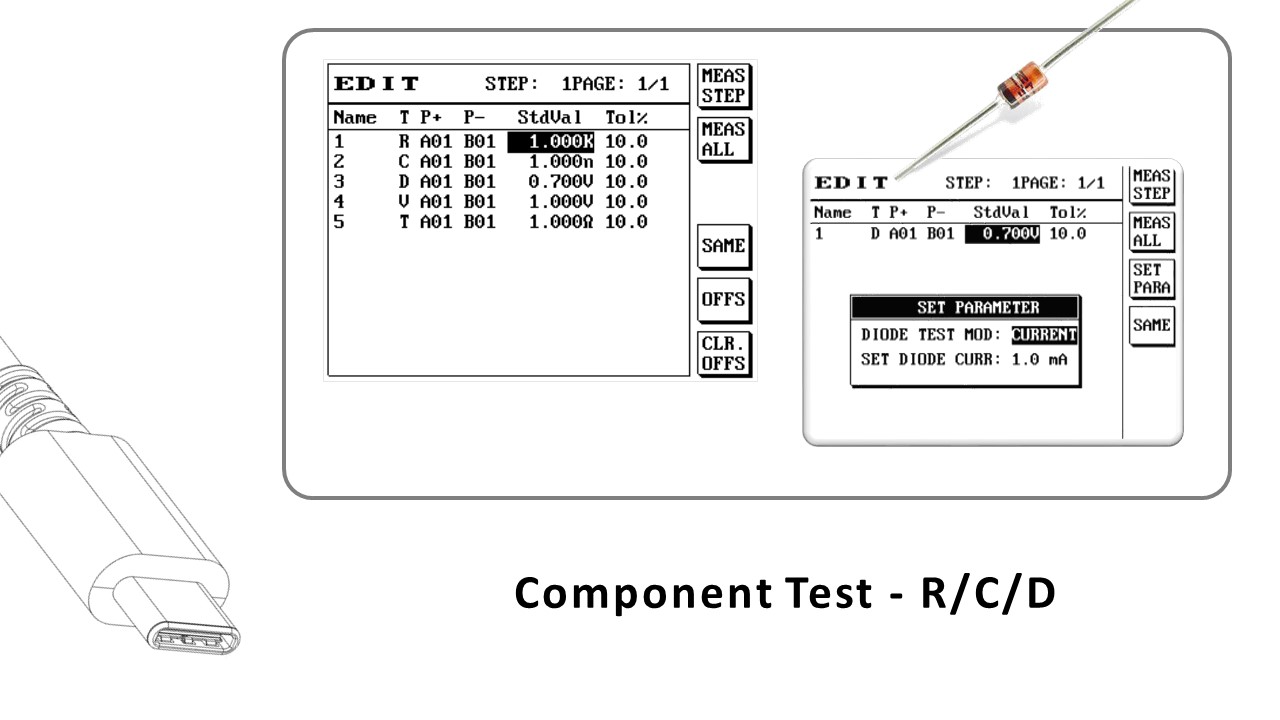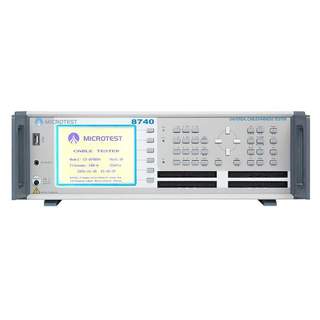คำอธิบาย
ดาวน์โหลดเสปค 8761 SPEC
การทดสอบ 4 สาย
เชื่อมต่อกับ DUT โดยตรงเพื่อป้องกันการเบี่ยงเบนใดๆ
สำหรับการวัด DUT ที่มีความต้านทานต่ำ เราแนะนำให้เลือกเครื่องทดสอบ 4 สาย
รายการวัดของเครื่องทดสอบสายเคเบิลหรือสายรัด 8761 มี(1) Open/Short;(2) Conductance; (3) Components; (4) AC Hipot; (5) DC insulation/ Hipot; (6) Quick conductance (7) Intermittence O/S, และ (8) Quick Intermittence open circuit. รองรับ RS-232, USB Host, Print, Remote interfaces
Conductance
ตรวจจับความต้านทานหน้าสัมผัสในขั้วต่อสายเคเบิล
ความต้านทานการนำไฟฟ้าเกินมาตรฐาน
Open/Short Test
ตรวจสอบให้แน่ใจว่าหน้าสัมผัสของสายไฟทำงานได้อย่างถูกต้อง
Open: ควรสัมผัส แต่ไม่ใช่
Short: ไม่ควรติดต่อสาย แต่ต่อได้
Intermittence O/S
ตรวจสอบให้แน่ใจว่าสายเคเบิลมีการเบี่ยงเบน open/short เป็นช่วงๆ
มีความเสียหายในส่วนของสายเคเบิลซึ่งทำให้เกิดการสัมผัสทันทีหรือไม่
HI pot Test
วางสายเคเบิลไฟฟ้าแรงสูงที่เสถียรเพื่อให้แน่ใจคุณภาพของ DUT
ฉนวนไฟฟ้ากระแสตรง
ผลลัพธ์จะตัดสินโดยอัตราความต้านทานของฉนวน ข้อบกพร่องในการต้านทานฉนวนอาจทำให้ DUT ถูกเจาะหรือกระแสไฟฟ้ารั่วภายใต้ไฟฟ้าแรงสูง
การทดสอบอาร์ค
ผลิตภัณฑ์ที่มีความเที่ยงตรงสูงสำหรับยานยนต์และการทหารบางประเภทไม่สามารถรับส่วนโค้งภายใต้ไฟฟ้าแรงสูงได้
ตรวจสอบหน้าสัมผัสลูปในขั้วต่อให้พอดีกับการร้องขอของฉนวนและแรงดันไฟฟ้า
ความต้านทานฉนวนระหว่างลูปต่ำกว่ามาตรฐาน
ค่าความต้านทานแรงดันต่ำกว่ามาตรฐานทำให้เกิดกระแสไฟรั่ว
วิธีทดสอบกราวด์ทั้งหมด
ต้องตั้งค่าขากราวด์สำหรับโหมดนี้เพื่อทำการทดสอบฉนวนสำหรับสายเคเบิลที่ไม่มีสายดินกับสายเคเบิลที่มีสายดินที่ระบุ ข้อดีคือทดสอบได้เร็ว แต่ข้อเสียคือไม่มีการทดสอบฉนวนระหว่างสายเคเบิลที่ไม่มีสายดิน
วิธีทดสอบไบนารีอย่างรวดเร็ว
โหมดนี้คล้ายกับการจัดหมวดหมู่อย่างรวดเร็ว หากมีพินทดสอบ 8 พิน ทดสอบ DUT A B C D E F G H เมื่อทำการทดสอบสำหรับสายเคเบิลหรือพินแต่ละอัน จะต้องทดสอบ 7 ครั้งตามลำดับเพื่อตรวจสอบว่าการทดสอบ DUT ผ่านหรือไม่ แต่ถ้าใช้วิธีทดสอบด่วน ครั้งแรก A B C D และ E F G H จะถูกแบ่งออกเป็นสองกลุ่มสำหรับการทดสอบ และครั้งที่สอง A B E F และ C D G H จะถูกแบ่งออกเป็นสองกลุ่มสำหรับการทดสอบ และครั้งที่สาม A C E G และ B D F H จะถูกแบ่งออกเป็นสองกลุ่ม สำหรับการทดสอบ การทดสอบจะต้องทำสามครั้งเท่านั้นเพื่อยืนยันว่าการทดสอบ DUT ผ่านหรือไม่ ดังนั้น หาก DUT ทดสอบมี 128 พิน และหากทำการทดสอบสำหรับสายเคเบิลหรือทุกพิน การทดสอบจะต้องทำ 127 ครั้ง ด้วยวิธีการทดสอบแบบด่วนนี้ การทดสอบจะรัน 8 ครั้งเท่านั้น แต่ข้อเสียคือหาไม่เจอว่าอันไหนเป็น error pin และค่าความต้านทานของส่วนสายจะต่ำกว่าค่าจริงเล็กน้อยเพราะทดสอบส่วนสายขนานกัน
วิธีทดสอบแบบหนึ่งไปแบบอื่น
นี่เป็นวิธีทดสอบขั้นพื้นฐานที่สุดสำหรับการทดสอบฉนวนไฟฟ้าแรงสูง ไฟฟ้าแรงสูงเชื่อมต่อกับพินทดสอบ A และพินอื่นๆ ต่อลงดินเพื่อสังเกตค่าการรั่วไหลหรือค่าความเป็นฉนวนในปัจจุบัน จากนั้นต่อไฟฟ้าแรงสูงเข้ากับพินทดสอบ B และพินอื่นๆ ต่อสายดินเพื่อสังเกตค่ากระแสไฟรั่วหรือความเป็นฉนวน 60 และ เร็วๆ นี้. ไฟฟ้าแรงสูงเชื่อมต่อกับพินแต่ละพินในขณะที่พินอื่นต่อสายดินเพื่อสังเกตการรั่วไหลหรือค่าความเป็นฉนวนในปัจจุบัน วิธีนี้สามารถยืนยันได้ว่าการทดสอบฉนวนไฟฟ้าแรงสูงของขาทดสอบทั้งหมดไม่มีปัญหา และจำนวนการทดสอบสำหรับวิธีนี้คือ N-1 ครั้ง วิธีทดสอบนี้มีความแม่นยำมากกว่าและสามารถหาค่าความเป็นฉนวนและค่าการรั่วไหลของกระแสไฟฟ้าสำหรับแต่ละพินได้ ข้อเสียของมันคือช้ากว่า
ทดสอบความต้านทาน
ทดสอบความจุ
ทดสอบไดโอด

ข้อมูลทางเทคนิค
| Model | 8761N, 8761NA , 8761FA |
| 4-wire measurement conductance 1mΩ-52Ω | |
| Test pin 64/128/256 | |
| Number of test file up to 500 sets | |
| Open/Short | |
| Conductance | |
| AC/DC Hipot Test | |
| DC insulation | |
| Quick conductance | |
| Multiple DUT test | |
| Support bar code scan and print function | |
| Automatically identify the normal or reverse plugin of wire or connectors |








